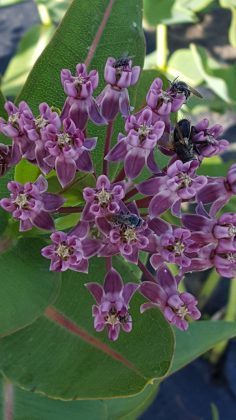Sign up for Our Newsletter
Signup for our newsletter to get notified
about sales and new products.
We are always updating inventory, if the product you want is listed as out of stock please contact us. Dismiss
Skip to content
Signup for our newsletter to get notified
about sales and new products.
$14.00 – $1,110.00
Designed for sun to part shade with heights ranging from 1 to 5 feet.
This mix contains 110 seeds per square foot; the recommended minimum rate for broadcast planting is 80 seeds per square foot.
For planting with a drill the recommended minimum seeds per square foot is 40.
For areas over 1/2 Acre. If you are using a drill for planting, you may be able to use the 1/2 acre mix for an entire acre.
We do custom mixing, so if you need a special mix or a more affordable option, we can adjust the species and rates to meet your needs. Just give us a call.
Note: For all mixes, components may change with availability of different species following yearly harvest.
| Weight | N/A |
|---|---|
| Dimensions | N/A |
| Size / Amount | 250 SQ FT, 500 SQ FT, 1000 SQ FT, 1/8 Acre (5400 SQ FT), 1/4 ACRE (11000 SQ FT), 1/2 ACRE (22000 SQ FT), 1 ACRE (43,500 SQ FT) |
| Light | |
| Moisture |
| Wildflowers | Weight |
|---|---|
| Allegheny Monkey-Flower (Mimulus ringens) | 7.99% |
| Lemon Beebalm (Monarda citriodora) | 7.49% |
| Self-Heal (Prunella vulgaris) | 7.07% |
| Upright Prairie-Coneflower (Ratibida columnifera) | 6.90% |
| White Sage (Artemisia ludoviciana) | 5.05% |
| Eastern Figwort (Scrophularia marilandica) | 4.62% |
| Tall Cinquefoil (Drymocallis arguta) | 4.60% |
| Tall Bellflower (Campanulastrum americanum) | 3.39% |
| Purple Prairie-Clover (Dalea purpurea) | 2.97% |
| Lavender Giant-Hyssop (Agastache foeniculum) | 2.25% |
| Catnip Giant-Hyssop (Agastache nepetoides) | 2.25% |
| Azure Aster (Aster oolentangiensis) | 1.60% |
| Western Wallflower (Erysimum asperum) | 1.15% |
| Southern Wild Senna (Senna marilandica) | 0.85% |
| Golden Alexander (Zizia aurea) | 0.44% |
| Wild Columbine (Aquilegia canadensis) | 0.38% |
| American Germander (Teucrium canadense) | 0.30% |
| Downy Gentian (Gentiana puberulenta) | 0.22% |
| Prairie Phlox (Phlox pilosa) | 0.19% |
| Wingstem (Verbesina alternifolia) | 0.18% |
| Tuberous Indian-Plantain (Arnoglossum plantagineum) | 0.15% |
| Dotted Gayfeather (Liatris punctata) | 0.14% |
| Meadow Anemone (Anemone canadensis) | 0.08% |
| Pale Poppy-Mallow (Callirhoe alcaeoides) | 0.06% |
| Joe Pye Weed (Eutrochium purpureum) | <0.01% |
| Total | 60.32% |
| Grasses | Weight |
|---|---|
| Long-Beak Sedge (Carex sprengelii) | 29.94% |
| Spring Wild-Rye (Elymus macgregorii) | 10.67% |
| Total | 40.61% |
Planting Instructions for Small Spaces
With a little patience, starting a Prairie Garden can be a rewarding process. Transforming a site into a colorful space for biological activity and discovering new species as the seasons progress can be a delightful experience.
Preparation
The more time you can spend on preparation, the more successful the planting. The goal is to reduce as many weeds and weed seeds as possible. You can accomplish this by nonselective herbicide applications, tilling, smothering or solarization. In a lawn area, you can simply remove the sod, put on a little top soil or compost and till it in. If you use smothering, herbicide or solarization, you will also want to till the area to allow good seed to soil contact.
Planting
You may sow your seed in spring or fall. Do not attempt to sow seed in the summer as it is more likely to die of heat and desiccation in our summer weather. Fall seeding allows perennial seeds to break dormancy over the winter months. This mix, however, is specifically designed to contain species that have fewer dormancy requirements than most native perennials so that you will see some results in the first year, even if you plant in the spring. That said, you may keep this new planting mowed to 4 to 6 inches in the first year to prevent weed seed from moving in. Pulling weeds may dislodge the plants you want to keep, so mowing is a better option. Many more plants will come up in the second year and may crowd out many of the weeds. If desired another mowing or two in the second year can be tolerated to keep weeds down.
Sowing the seed
Place a small amount of sand, vermiculite, rice hulls, or other filler in a bucket. Dump in your seed and additional filler and mix well with your hands. Save half of this mixture in another bucket. Using one half of the mixture, spread the seed by hand or with a hand crank grass seeder over your entire prepared seed bed. Then repeat with the second half of the seed. By spreading half at a time, you will be sure not to run out of seed before you have covered the entire area.
Seed Mixes
Seed Mixes
Reviews
There are no reviews yet.